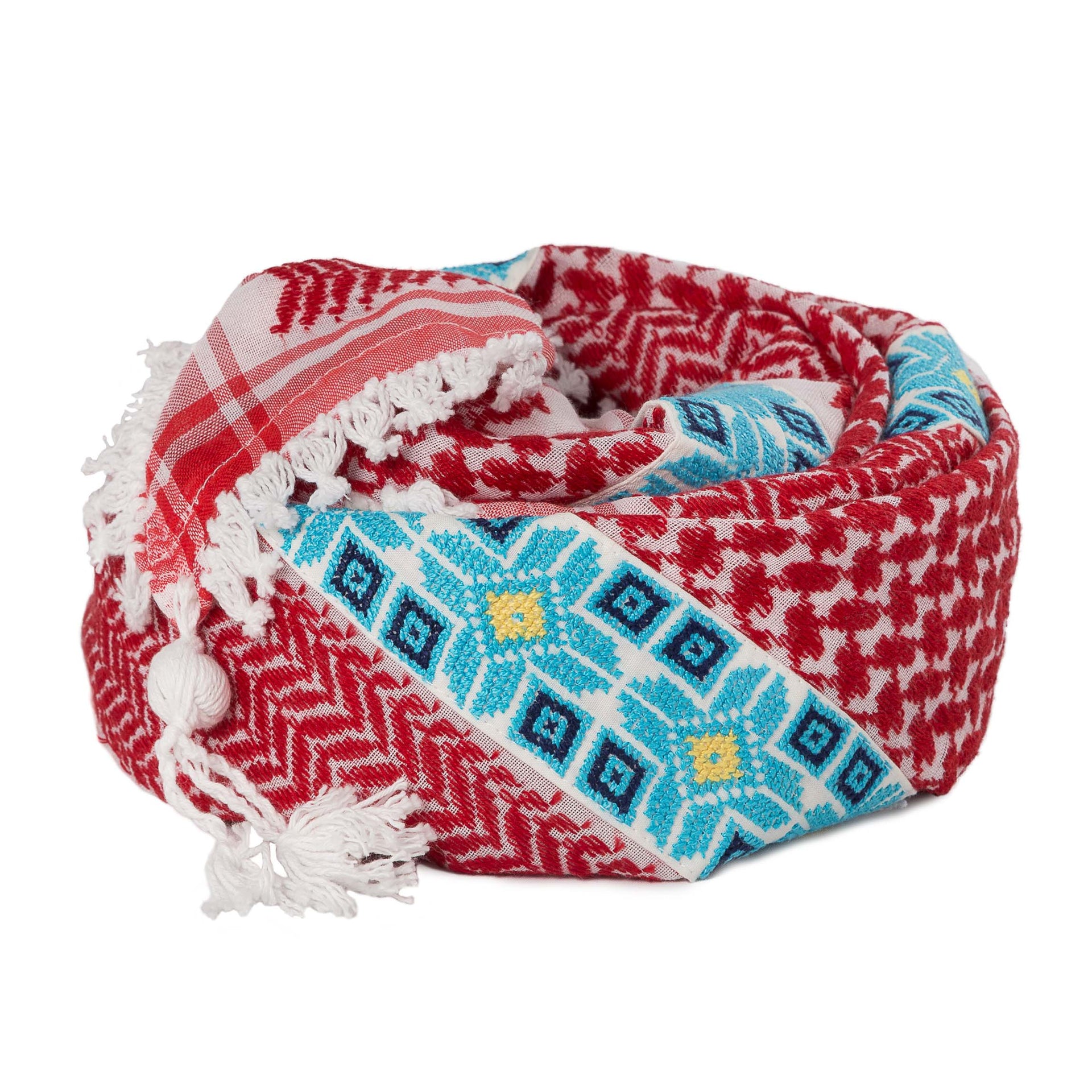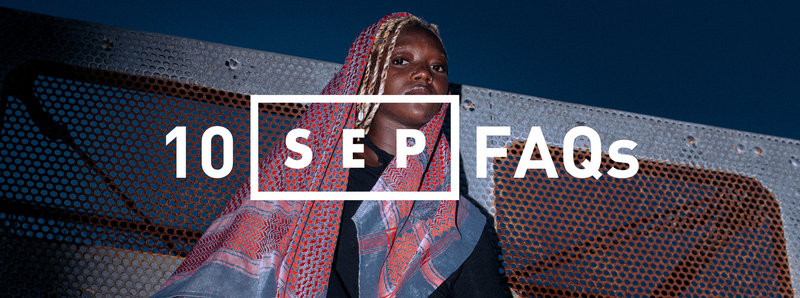8 FAQ's about the keffiyeh
Posted on January 26 2020
1. Is it a political statement?
"With origins as a plain headdress meant to protect from the sun in summer, from cold in winter, and from wind and dust in the desert, the kufiya is traditionally woven in black or red thread in several well-established patterns. Called kufiya (kuh-FEE-uh) mainly in the Levant, it is known by other names in other regions—ghutra, shamagh or hattah, most commonly" "Across the Arab social spectrum—from hinterlands to capitals, from shepherds to software developers, revolutionaries to royalty, the kufiya has long been a sign of Arab identity. With fashion’s insatiable appetite for fusion, and especially since the proliferation of social media, the kufiya has been crossing historic cultural and geographical boundaries to step—confidently, it appears—into the lexicon of global cool." Read the full Aramco article HERE.

EDWARD BERTHELOT / GETTY IMAGES
In Paris, model Sidya Sarr wears a traditional black-and-white kufiya less for utility and more for street style.
2. Which color represents which geographical area?
Some of the SEP Jordan keffiyeh scarves have a geographical connotation, while others do not. Once they are hand-embroidered by a SEP Artist, they each become a piece unique, with a story of its own. See below for a quick guide:

3. How do I wear it?
The beauty of the keffiyeh is that you can wear it however and wherever you want! As a head-scarf, as a neck-scarf, as a pareo, to cover your shoulders, on your sofa as a throw, at the beach on your chair... One of the reasons behind launching the #keffiyehchallenge (ndr. active between Feb 1st and March 30th, stay tuned) is that we believe all the entries will provide some creative ideas and inspiration. You often ask for tutorials: some of the challenge videos will surely be tutorials and we hope you will love them!

4. How shall I wash it?
If you want to make 100% sure your pompoms will be protected, then hand-washing is the safest option. We wash our own keffiyeh in the washing machine, delicate programme, 30 degrees. They will dry within minutes and they will not need ironing (one of the positive aspects of the poly/acrylic composition!).

5. Why are the SEP keffiyeh made with poly and acrylic yarn?
As a scarf meant to protect from the sun in summer, from cold in winter, and from wind and dust in the desert, our supplier (one of the last Jordanian keffiyeh producers!) textile engineers have come up with this specific mix of polyester and acrylic, to make it a truly "technical material". We hope you will wear it all your life and pass it on to future generations, hence it will NOT be thrown away and pollute our planet!
6. What do I do when I pull a thread?
It can happen, especially if you wear your keffiyeh with necklaces or if you wear rings. It can be stuck in your zipper or a thread can pull when you take it off a hanger. Never mind: the keffiyeh is structured in such a way, that you can easily mend the pulled thread in 4 easy steps, without risking to see the whole pattern go!
A - Pull up the loose thread (you need at least 3cm to make sure you mend it well).
B - Cut the tip with scissors: you now have two threads coming out of your scarf.
C - Make a double or even triple knot, all the way down to the keffiyeh base fabric.
D - Cut the loose ends. Fold the keffiyeh and open it again: it will be almost impossible to identify the mend!
7. How is a keffiyeh made?
The making a keffiyeh involves a complex and very special technique. Here are some snippets to show you how the SEP keffiyeh are made:

Once all the needed yarns are put in place, the flying shuttle machines will weave the base fabric and the "flower". A manual input is required to cut off loose threads between two keffiyeh. A roll of keffiyeh fabric is woven by these ancient machines and it is ready for post-production.

The keffiyeh fabric roll is professionally ironed and then each keffiyeh is manually cut. The next stage is sawing the edges and adding the fringes, which can be done either manually or by machine.
8. How long does it take to embroider a SEP keffiyeh?
Depending on the amount of embroidery, a SEP keffyieh can take a few days to several weeks to embroider.

Browse our best selling Keffiyehs below, or shop the collection here >
 |
|||

|
|||

|
A great reference read is this Grazia Middle East Article, published in October 2024: "The Keffiyeh Through The Ages: How An Ancient Garment Became An Iconic Emblem Of Resilience And Identity"















